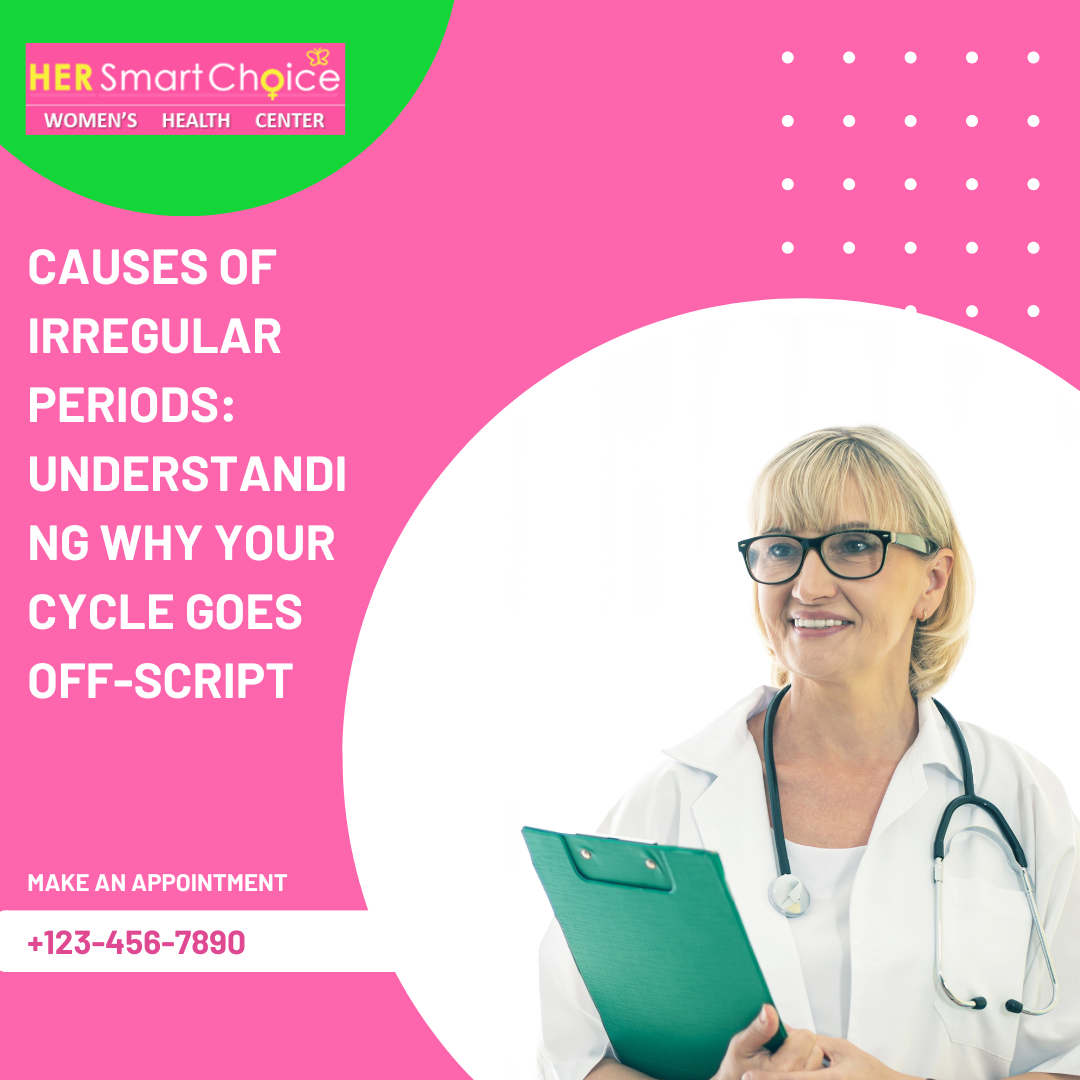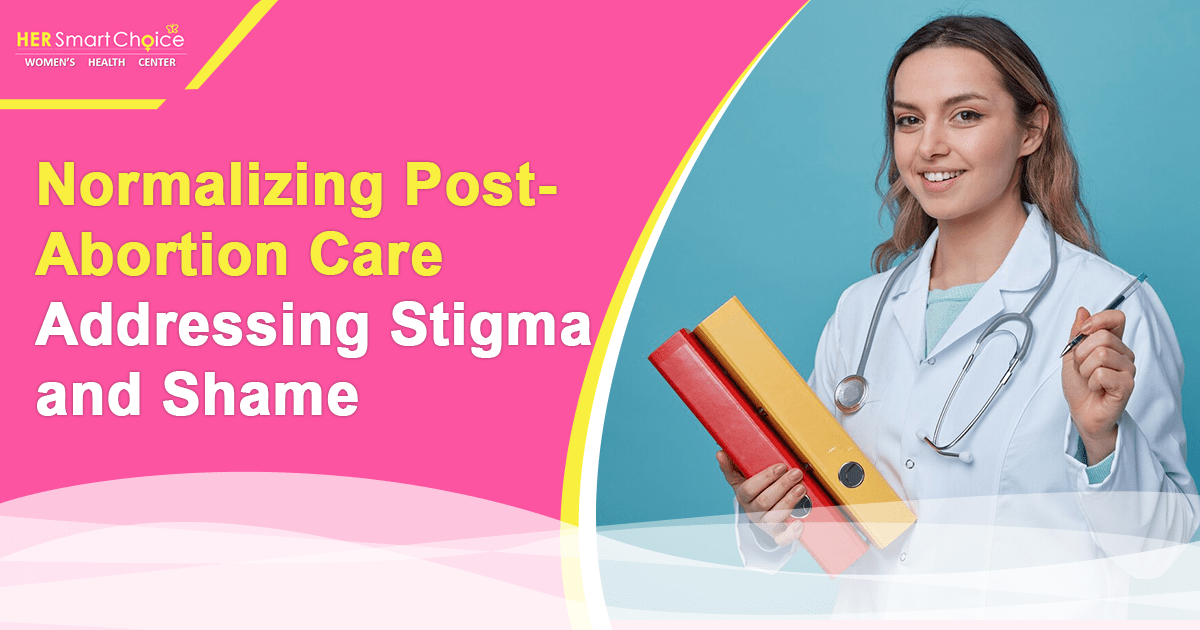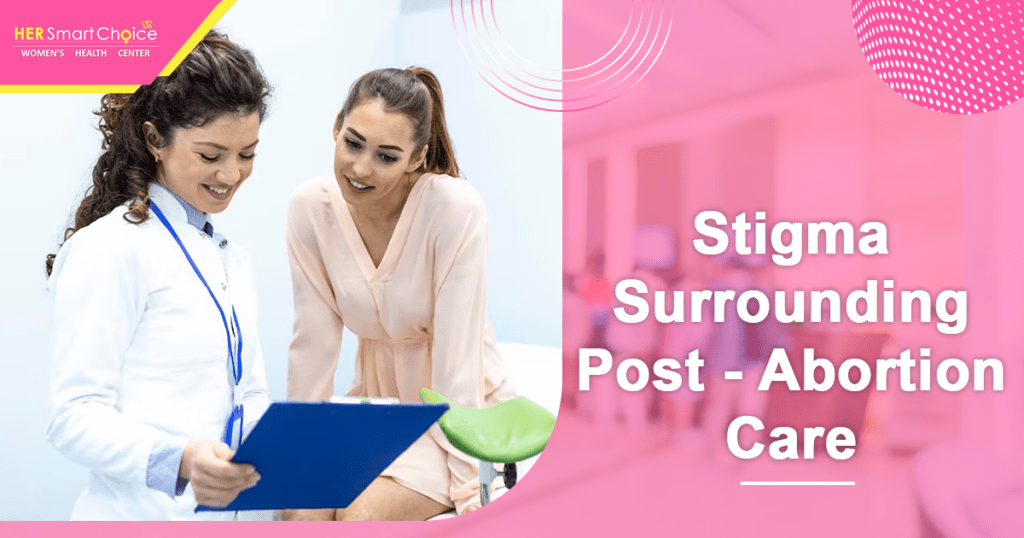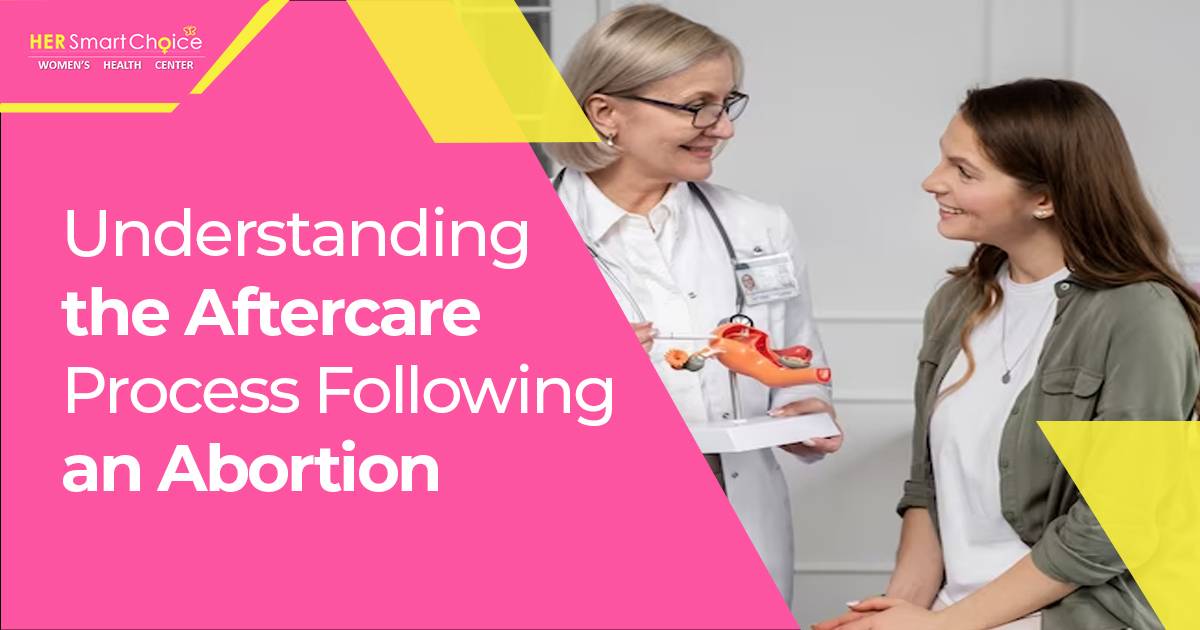Causes of Irregular Periods: Understanding Why Your Cycle Goes Off-Script
Feeling like your period has a mind of its own? You’re not alone. Irregular periods are a common experience, affecting an estimated 14–25 percent of menstruating individuals worldwide. Often, they’re your body’s way of signaling something deeper happening within – whether it’s a subtle hormonal shift, a lifestyle tweak, or an underlying health condition.
This comprehensive guide is designed to help you understand why your cycle might be unpredictable. We’ll explore everything from the everyday habits that influence your flow to specific medical conditions, medications, and natural life stages. Our goal? To empower you with knowledge, so you can take confident steps towards greater cycle predictability and overall well-being.
What Are the Most Common Reasons for Irregular Periods?
So, what’s really going on when your period goes off-script? Often, it’s a mix of factors – think of them as interconnected pieces of a puzzle. We’re talking about hormonal shifts, daily habits, and specific health conditions, all working together to throw your cycle off balance. Getting a handle on these big-picture categories is your first step to understanding your body better.
Let’s start with a quick overview:
| Cause Category | Attribute | Typical Impact |
|---|---|---|
| Hormonal Imbalance | Estrogen/Progesterone Fluctuation | Variable cycle length or skipped ovulation |
| Lifestyle Factors | Stress and Weight Changes | Delayed or missed periods |
| Medical Conditions | PCOS, Thyroid Disorders, PID | Heavy, light, or erratic bleeding |
How Do Hormonal Imbalances Lead to Irregular Menstrual Cycles?
Think of your hormones – especially estrogen and progesterone – as the conductors of your menstrual symphony. When they’re out of tune, even slightly, your cycle can go off-key. This imbalance can prevent consistent ovulation (releasing an egg) or proper shedding of the uterine lining. For instance, too little progesterone after ovulation might stretch your cycle out, while too many androgens could stop an egg from developing altogether. Spotting these hormonal patterns is key to understanding many common reasons for irregular periods.
Hormonal Imbalances and Menstrual Cycles
Hormonal imbalances, particularly fluctuations in estrogen and progesterone, are a primary cause of irregular menstrual cycles. These fluctuations can lead to variable cycle lengths or missed ovulation, disrupting the normal menstrual cycle. Understanding these hormonal patterns is essential for diagnosing endocrine-related causes of irregular periods.
National Institutes of Health, “Menstrual Cycle” (2024) Read more.
This research supports the article’s claims about the impact of hormonal imbalances on menstrual cycle regularity.
Which Lifestyle Factors Affect Period Regularity?
It might surprise you how much your daily life – from your stress levels to your diet – can actually ‘talk’ to your hormones and influence your ovarian function. Chronic stress, for example, can elevate cortisol, which might put the brakes on your body’s natural signals for menstruation. Meanwhile, significant shifts in your weight can change your estrogen levels, directly impacting your cycle length. Understanding these connections empowers you to make targeted adjustments that can bring back predictability.
Lifestyle Factors and Menstrual Irregularities
Lifestyle factors, such as chronic stress and significant weight changes, can influence the hypothalamic–pituitary–ovarian axis, thereby affecting menstrual cycle timing. Chronic stress can elevate cortisol levels, which may delay menstruation. Weight loss or gain can also shift estrogen levels, impacting cycle length.
American College of Obstetricians and Gynecologists, “Abnormal Uterine Bleeding” (2023)
This source provides further information on how lifestyle factors contribute to irregular menstrual cycles.
What Medical Conditions Commonly Cause Irregular Periods?
Beyond hormones and lifestyle, certain medical conditions can directly interfere with your menstrual cycle. These can range from issues within your reproductive system to broader health problems that impact your body’s delicate balance. Conditions like Polycystic Ovary Syndrome (PCOS), thyroid dysfunction, endometriosis, pelvic inflammatory disease (PID), and even structural issues like fibroids or polyps can all show up as cycle irregularities. Identifying these conditions is crucial, as it guides the most effective treatment plan.
Medical Conditions and Irregular Periods
Various gynecological and systemic diseases, including PCOS, thyroid disorders, and PID, can directly interfere with uterine lining growth, ovarian function, or hormonal feedback loops, leading to cycle irregularities. Identifying these conditions is crucial for effective treatment and management of irregular periods.
Mayo Clinic, “Irregular Periods” (2024)
This citation supports the article’s discussion of medical conditions that can cause irregular periods.
Understanding these categories clarifies why menstrual cycles become unpredictable and leads us into the specific roles of hormonal changes in irregular periods.
How Do Hormonal Changes Cause Irregular Periods?

Let’s dive deeper into the fascinating world of hormones. They’re the true architects of your menstrual cycle, meticulously guiding everything from egg development to the monthly shedding of your uterine lining. When these crucial hormones get out of sync, it’s like a domino effect, leading to those unpredictable or even absent periods.
What Role Do Estrogen and Progesterone Fluctuations Play?
Estrogen and progesterone are the dynamic duo orchestrating the two main phases of your menstrual cycle. Estrogen takes the lead in the first half, building up the uterine lining. Then, after ovulation, progesterone steps in to stabilize that lining. When estrogen stays high without enough progesterone to balance it, you might experience breakthrough bleeding or unusually long cycles. On the flip side, low estrogen can lead to very light or delayed periods.
How Do Thyroid Disorders Affect Menstrual Cycles?
Your thyroid hormones are tiny but mighty, regulating your metabolism and even influencing how your sex hormones are transported. If your thyroid is underactive (hypothyroidism), it can often lead to heavier, more irregular bleeding. This happens because it can elevate other hormones that then suppress the signals needed for a regular cycle. If your thyroid is overactive (hyperthyroidism), you might experience scant, infrequent periods due to an accelerated metabolism of ovarian steroids. Both conditions definitely warrant an endocrine evaluation.
What Is Polycystic Ovary Syndrome (PCOS) and How Does It Cause Irregular Periods?
Polycystic Ovary Syndrome (PCOS) is a common hormonal condition that often brings irregular periods along for the ride. It’s typically characterized by insulin resistance, higher-than-normal androgen levels (often called ‘male hormones,’ though women have them too!), and sometimes, many small follicles on the ovaries. The big impact on your cycle? Anovulation – meaning your ovaries aren’t consistently releasing an egg. This can lead to cycles that stretch beyond 35 days, or even completely missed periods. The irregular bleeding often comes from estrogen building up in the uterine lining without enough progesterone to balance it out. You might also notice other symptoms like excess hair growth (hirsutism), acne, or weight gain.
How Can Pituitary Gland Issues Disrupt Menstrual Regularity?
Your pituitary gland, a tiny but powerful master gland in your brain, secretes FSH and LH – the hormones that kickstart follicle maturation and ovulation. If there’s an issue with your pituitary, like an adenoma (a benign tumor) or hyperprolactinemia (too much prolactin), it can suppress these crucial gonadotropins. The result? Oligomenorrhea (infrequent periods) or even amenorrhea (absent periods). Thankfully, addressing pituitary dysfunction through medical therapy often helps restore those cyclical hormone patterns.
Having explored endocrine-driven causes, we now turn to everyday habits that shape menstrual regularity.
Which Lifestyle Factors Contribute to Irregular Menstrual Periods?
It might surprise you how much your daily life – from your stress levels to your diet – can actually ‘talk’ to your hormones and influence your ovarian function. The good news? Sometimes, simply tweaking your daily routines can bring your cycle back into a predictable rhythm, often without needing medication.
Can Stress and Cortisol Levels Cause Irregular Periods?
Absolutely. When you’re under chronic stress, your body activates its “fight or flight” response, which elevates cortisol. This excess cortisol can actually reduce the frequency of GnRH pulses – the signals that tell your ovaries to ovulate. The result? Delayed or suppressed ovulation, leading to frustrating cycle irregularity.
How Do Weight Changes Impact Menstrual Cycles?
Your body weight plays a significant role because fat tissue (adipose tissue) produces estrogen. So, fluctuations can really throw things off:
- Significant weight loss, especially rapid or extreme, can lead to hypothalamic amenorrhea, where your body essentially puts reproduction on hold due to perceived energy scarcity.
- Excess weight often increases peripheral estrogen, which can lead to anovulatory cycles (cycles without ovulation) and sometimes, heavier bleeding.
What Is the Effect of Excessive Exercise and Eating Disorders on Periods?
When your body is under extreme physical stress from intense training or isn’t getting enough fuel due to restrictive eating (as seen in eating disorders), it conserves energy. This can lower leptin and GnRH secretion, leading to amenorrhea (absent periods). Essentially, your body decides it doesn’t have enough energy to support reproductive functions, so it shuts them down.
How Do Sleep Patterns, Diet, Alcohol, and Smoking Influence Period Regularity?
These daily habits have a ripple effect on your hormones:
- Poor sleep disrupts your melatonin and cortisol rhythms, which in turn can affect GnRH release.
- High-glycemic diets can cause insulin spikes, exacerbating hormonal imbalances.
- Alcohol and nicotine are known to interfere with estrogen metabolism, potentially contributing to irregular bleeding.
By fine-tuning stress management, nutrition, and exercise, many individuals can regain cycle consistency. Next, we examine medical diagnoses that demand professional care.
What Medical Conditions Are Linked to Irregular Periods?

Beyond hormones and lifestyle, certain medical conditions can directly interfere with your menstrual cycle. These can range from issues within your reproductive system to broader health problems that impact your body’s delicate balance. Catching these early is incredibly important, not just for managing your periods, but for protecting your fertility and overall well-being.
How Do Endometriosis and Adenomyosis Cause Irregular Bleeding?
Endometriosis and adenomyosis involve endometrial tissue (the lining of your uterus) growing where it shouldn’t – outside the uterine cavity (endometriosis) or within the uterine muscle wall (adenomyosis). These misplaced tissues still respond to your hormonal cycles, leading to inflammation and breakdown. The result? Often heavy, painful, and frustratingly erratic bleeding.
What Are the Effects of Uterine Fibroids and Polyps on Menstrual Cycles?
These are benign (non-cancerous) growths that can significantly impact your cycle. Fibroids, which are muscular tumors, can distort the uterine architecture, increasing the surface area for bleeding and leading to prolonged, heavy flows. Polyps, which are small growths on the uterine lining, often trigger spotting or unpredictable bleeding between periods.
How Does Pelvic Inflammatory Disease (PID) Affect Period Regularity?
PID is an infection of the upper reproductive tract, often leading to scarring and adhesions. This chronic inflammation can impair the function of your fallopian tubes and alter hormone signaling, frequently manifesting as irregular or painful periods.
What Is Primary Ovarian Insufficiency (POI) and Its Impact on Menstruation?
Primary Ovarian Insufficiency (POI), sometimes called premature ovarian failure, occurs when your ovarian follicles deplete before the age of 40. POI often presents with irregular or absent periods, along with symptoms like hot flashes, and significantly reduced fertility due to diminished estrogen production.
Can Certain Cancers Cause Irregular Periods?
While less common, cancers of the uterus or ovaries can disrupt normal endometrial shedding. This can happen through tissue overgrowth or malignant invasion, leading to abnormal bleeding patterns that absolutely require immediate medical evaluation.
What Are Bleeding Disorders and Asherman Syndrome’s Roles in Irregular Periods?
Inherited bleeding disorders, such as von Willebrand disease, impair your blood’s ability to clot properly, which can result in unusually heavy menstrual flows. Asherman syndrome, on the other hand, involves uterine adhesions (scar tissue) often from surgery or infection. These adhesions can block normal shedding, leading to scant or even absent bleeding.
Identifying these medical causes often necessitates imaging, lab tests, and specialist consultation to guide targeted treatment. Next, we consider how medications and contraceptives shape cycle regularity.
How Do Medications and Contraceptives Affect Menstrual Cycle Regularity?
It’s not just your body’s internal workings that can affect your cycle; sometimes, the medications you take can play a role too. Many pharmaceutical agents, especially hormonal contraceptives, are designed to alter your hormone levels or uterine lining, leading to predictable changes or, occasionally, unexpected bleeding.
What Are the Effects of Hormonal Birth Control Methods on Periods?
Hormonal contraceptives – including pills, patches, rings, injections, and hormonal IUDs – work by regulating or suppressing ovulation through consistent levels of estrogen and progestin. Common side effects and impacts include:
- Irregular spotting, especially during the first few months as your body adjusts.
- Lighter, shorter periods or even amenorrhea (no periods), particularly with certain IUDs or continuous pill regimens.
- Breakthrough bleeding if doses are missed, as this disrupts the consistent hormone levels.
Which Other Medications Can Cause Irregular Bleeding?
Several non-contraceptive drugs may also provoke changes in your cycle:
- Antidepressants: Some can alter serotonin metabolism, which indirectly affects GnRH.
- Anticoagulants (blood thinners): These impair clot formation, potentially leading to heavier menstrual flows.
- Antipsychotics: Certain types can elevate prolactin levels, which may suppress ovulation.
- Chemotherapy agents: These powerful drugs can directly damage ovarian follicles, often causing amenorrhea.
Understanding medication side effects helps differentiate drug-induced bleeding from other causes. We now explore how life stages and biological events influence menstrual regularity.
How Do Life Stages and Biological Events Influence Irregular Periods?
Your body is constantly evolving, and with each major life stage, your hormones shift and adapt. From your very first period to the transition into menopause, these natural biological milestones can significantly influence your cycle’s predictability.
Why Are Irregular Periods Common During Puberty?
Ah, puberty – a time of immense change! During the first two years after menarche (your first period), your hypothalamic–pituitary–ovarian axis is still maturing. Ovulation may be sporadic, leading to cycles that are shorter than 21 days or longer than 45 days. It takes time for those hormonal feedback loops to stabilize, so patience is key during this phase.
How Do Pregnancy, Miscarriage, and Breastfeeding Affect Menstrual Cycles?
These significant life events profoundly impact your cycle:
- Pregnancy naturally halts menstruation entirely.
- Miscarriage or childbirth introduces a cascade of hormonal fluctuations that can delay your cycle’s return.
- Breastfeeding maintains high prolactin levels, which often suppresses ovulation and delays the return of your period until you begin to wean.
What Changes Occur in Perimenopause and Menopause That Cause Irregular Periods?
Perimenopause, which typically begins in your 40s, is your body’s natural transition towards menopause. During this time, you’ll experience erratic estrogen production and a decline in ovarian reserve, leading to unpredictable cycle lengths and varying bleeding intensity. Menopause itself is officially confirmed after 12 consecutive months without a period.
Transitioning through these life stages is natural, yet understanding each phase supports informed health decisions. Knowing when to seek medical advice can expedite appropriate care.
When Should You See a Doctor About Irregular Periods?
While some cycle variations are normal, persistent or severe irregularities can be your body’s way of signaling something that needs professional attention. Don’t hesitate to reach out to a healthcare provider – early detection can make a world of difference in treatment success and preventing potential complications.
What Are the Warning Signs and Red Flags for Irregular Menstrual Cycles?
It’s time to seek medical attention if you experience any of the following:
- Periods that are consistently longer than 90 days apart.
- Soaking through sanitary protection (pads or tampons) every hour for more than two hours.
- Bleeding between cycles that lasts longer than seven days.
- Severe pain that doesn’t respond to over-the-counter pain relievers.
- Symptoms of anemia, such as extreme fatigue, dizziness, or noticeable pallor (unusual paleness).
How Can Early Diagnosis Improve Treatment Outcomes?
Timely evaluation allows for prompt identification of underlying causes – whether they’re endocrine disorders, anatomical anomalies, or systemic diseases. This early insight enables targeted interventions that can preserve your fertility, reduce pain, and restore hormonal balance, ultimately leading to better long-term health outcomes.
Recognizing when to consult a healthcare provider ensures that irregularities are addressed before they escalate, paving the way for personalized management approaches.
What Are Effective Ways to Manage and Treat Irregular Period Causes?
The good news is that regaining menstrual regularity is often very achievable! It typically involves a personalized approach, combining medical treatments with targeted lifestyle adjustments, all designed to address the specific root cause of your irregular periods.
How Can Hormonal Therapy Help Regulate Periods?
Hormonal therapies, such as combined oral contraceptives, cyclic progestins, or GnRH analogs, are often used to reestablish predictable hormone patterns, suppress endometrial overgrowth, and reduce bleeding. The best therapy for you will depend on your underlying diagnosis, the severity of your symptoms, and your reproductive goals.
What Lifestyle Changes Can Improve Menstrual Regularity?
Implementing stress reduction techniques, embracing balanced nutrition, engaging in moderate exercise, and prioritizing proper sleep are powerful ways to foster hormonal equilibrium. Key recommendations include:
- Practicing mindfulness, meditation, or cognitive behavioral strategies to help lower cortisol levels.
- Maintaining a healthy BMI through a diet rich in nutrient-dense, whole foods.
- Limiting ultra-intense training and ensuring you’re consuming adequate calories to support your body’s needs.
- Sticking to consistent sleep–wake schedules to regulate your body’s natural rhythms.
When Is Medical Intervention Necessary for Underlying Conditions?
If lifestyle adjustments and first-line hormonal treatments don’t normalize your cycles, further medical interventions may be necessary. These can include:
- Surgical management for issues like fibroids, polyps, or severe endometriosis.
- Metformin, a medication often used for insulin resistance, particularly in cases of PCOS.
- Thyroid hormone replacement for individuals diagnosed with hypothyroidism.
- Specialist referral to an endocrinologist or other specialist for pituitary or ovarian insufficiency.
Combining personalized medical care with targeted lifestyle strategies yields the best outcomes for cycle predictability and overall health.
Frequently Asked Questions
Making specific lifestyle adjustments can significantly improve menstrual regularity. Focus on stress management techniques such as mindfulness or yoga, which can lower cortisol levels that disrupt ovulation. Additionally, maintaining a balanced diet rich in whole foods and ensuring adequate caloric intake can support hormonal balance. Regular moderate exercise is also beneficial, as it helps regulate body weight and hormonal levels. Prioritizing good sleep hygiene by sticking to consistent sleep schedules can further enhance your overall hormonal health.
Tracking your menstrual cycle can provide valuable insights into your reproductive health. Use a calendar or a dedicated app to log the start and end dates of your periods, noting any irregularities in flow or symptoms. Include details about lifestyle factors such as stress levels, diet, and exercise. This data can help identify patterns and triggers for irregularities, making it easier to discuss with your healthcare provider. Regular tracking empowers you to take proactive steps in managing your menstrual health.
While it’s essential to consult a healthcare provider for persistent irregularities, some natural remedies may help. Herbal supplements like chaste tree (Vitex) are believed to support hormonal balance and regulate cycles. Additionally, maintaining a healthy weight through diet and exercise can positively influence menstrual regularity. Acupuncture and yoga have also been reported to help some individuals manage stress and hormonal fluctuations. However, always discuss any natural remedies with your doctor to ensure they are safe and appropriate for your situation.
Staying well-hydrated is crucial for overall health, including menstrual health. Proper hydration helps maintain optimal blood flow and can alleviate symptoms like bloating and cramping associated with menstruation. Dehydration can exacerbate hormonal imbalances, potentially leading to more irregular cycles. Aim to drink plenty of water throughout the day, and consider incorporating hydrating foods like fruits and vegetables into your diet. This simple habit can support your body’s natural processes and contribute to a more regular menstrual cycle.
Age plays a significant role in menstrual cycle regularity. During puberty, cycles can be irregular as the body adjusts to hormonal changes. In the 30s and 40s, women may experience fluctuations due to perimenopause, where hormonal levels begin to decline, leading to irregular periods. Understanding these age-related changes is essential for managing expectations and recognizing when to seek medical advice. Each life stage brings unique challenges, and being informed can help you navigate these transitions more effectively.
Severe menstrual pain, known as dysmenorrhea, can significantly impact your quality of life. If over-the-counter pain relievers like ibuprofen or naproxen do not alleviate the discomfort, it’s essential to consult a healthcare provider. They can evaluate for underlying conditions such as endometriosis or fibroids that may require specific treatments. Additionally, lifestyle changes, such as regular exercise, heat therapy, and dietary adjustments, can help manage pain. Don’t hesitate to seek help if your symptoms are severe or persistent.
Conclusion
Understanding the causes of irregular periods empowers you to take control of your menstrual health and overall well-being. By recognizing the interplay of hormonal imbalances, lifestyle factors, and medical conditions, you can make informed decisions about your body. If you’re experiencing irregularities, consider tracking your cycle and consulting a healthcare provider for personalized guidance. Explore our resources for more insights on managing your menstrual health effectively.
This article was written and reviewed by the editorial team at Her Smart Choice, a trusted provider of women’s health services with licensed professionals across Los Angeles, CA.
About Her Smart Choice
Her Smart Choice is dedicated to providing comprehensive and accessible women’s health services. With a team of licensed professionals across Los Angeles, we offer expert care and reliable information to support your well-being. For more information, visit Her Smart Choice.
Our medical authority is backed by our team of experienced and licensed healthcare providers who are committed to evidence-based practices and patient-centered care.




















 Your
Your 
 Here are some steps to incorporate Period Positivity into your life:
Here are some steps to incorporate Period Positivity into your life:

